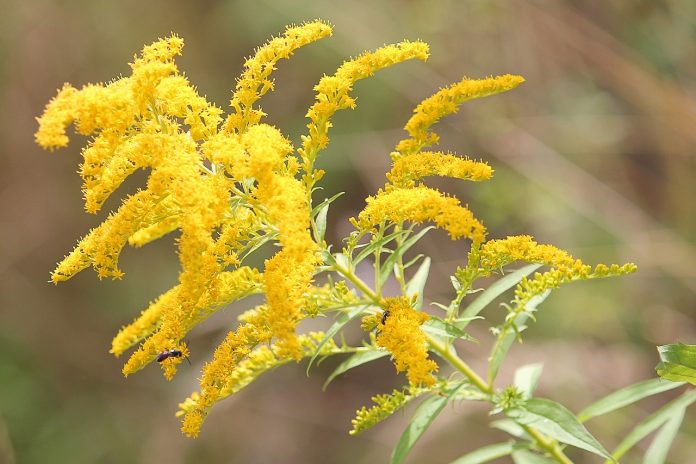One evening a few weeks ago, my wife and I played cards with our daughter and her husband at their home near Asheville, North Carolina. A cool breeze drifted through an open window and so did the cacophony of a katydid chorus.
Hundreds, if not thousands, of katydids, sang almost in unison. It was so loud I had trouble concentrating on the game. (Maybe that’s why I didn’t win a single hand.)
Now, a few weeks later, the katydids are singing in our backyard about 300 miles north of Asheville. They have not yet reached the point of drowning out more subtle night sounds.
Male katydids sing from early evening well into the night. The song is harsh and burry and sounds something like “Ch-ch” or “Ch-ch-ch” or “ch-ch-ch-ch.”
The phrases are repeated about once a second, and the rhythm suggests the insect’s name: Ka-ty, ka-ty-did or kay-ty-did-did.
Joining the chorus
An additional familiar voice will soon join the late summer nocturne. Snowy tree crickets generate a seemingly endless series of high-pitched melodic chirps.
During the day, they feed quietly amidst the foliage of trees and shrubs. Thanks to their small size and cryptic pale green color, they blend in with their surroundings. At night, their song is ventriloquistic. Shine a light where you think the tree cricket must be, and sure enough, it’s not.
Another summer night sound is the “peent” of the common nighthawk, kin to the whip-poor-will. Scan the sky around the lights at a nighttime baseball game, and you’re almost certain to see these birds sweeping the sky for flying insects.
Listen intently when the din of the crowd subsides, and you may hear their distinctive nasal “Peent!” For the rest of the month, nighthawks will gather in flocks as they prepare for migration.
Chimney swifts
Similarly, chimney swifts scour the sky during daylight hours before they descend into chimneys to roost. If you know a chimney being used by the swifts, watch it in the evening just before sundown. At dusk, swifts assemble and descend en masse into chimneys to roost.
In late summer, hundreds or even thousands may spend the night in abandoned industrial and residential chimneys. Watching them return for the night is like seeing a plume of smoke descending back into the chimney.
A familiar sound on hot summer days is the pulsing drone of dog day cicadas. Singing cicadas usually signal the arrival of uncomfortable heat and humidity.
Dragonfly swarms
Much less frequent and predictable are late summer swarms of dragonflies.
Over the last few weeks, I’ve received several emails and letters from readers reporting large aggregations of dragonflies, usually hovering above the grass in a wet meadow. I received similar reports of dragonfly swarms back in 1993 and 2011.
Some readers described the phenomenon as, “clouds of dragonflies that darkened the air just above the ground.”
Though dragonflies are expert aerial predators, they are harmless to people. They do not sting, but they are serious predators of flying insects. So dragonflies are great to have around.
Entomologists suggest that late summer swarms of dragonflies may be responding to population explosions of tiny flying insects such as mosquitoes, gnats, and midges. In such cases, these tiny insects would be invisible to the distant human eye.
It might seem that the dragonflies appear for no reason, but they are enjoying a feeding frenzy. When the prey disappears, so do the dragonflies.
Oceans of gold
If you prefer stationary targets, roadsides and old fields have already begun to burst into their late summer colors. Bright patches of yellow signal that goldenrod has begun to bloom. By the end of the month, unmowed fields will transform into oceans of gold.
Scattered among the goldenrod, watch for dark purple flowers atop stems that can reach 4 or 5 feet high. Ironweed is one of my favorite summer wildflowers.
And if there’s a damp meadow nearby, look for dense stands of Joe-Pye-weed. Its pink-purple flowers are butterfly magnets. Tiger swallowtails find it particularly irresistible.
Birds dominate our senses in spring, but from mid to late summer, insects and wildflowers take center stage. Take time to notice the changing of the guard.













